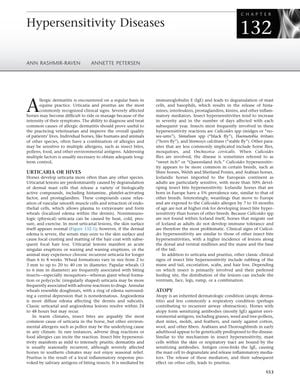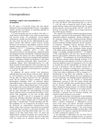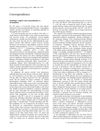Hypersensitivity Diseases in Horses: Clinical Signs, Diagnosis, and Treatment
July 2014
in “
Elsevier eBooks
”
allergic dermatitis urticaria insect bite hypersensitivity atopy food hypersensitivity contact hypersensitivity drug eruptions glucocorticoids antihistamines fatty acids equine cutaneous pythiosis Pythium insidiosum immunotherapy antifungal solutions allergen-specific immunotherapy allergic skin reactions hives insect allergy environmental allergy food allergy contact allergy drug reactions steroids allergy medications omega-3 fatty acids skin infection fungal infection treatment ASIT

TLDR The document concludes that various hypersensitivity diseases in horses can be diagnosed and treated with methods like immunotherapy and medication, and early aggressive treatment is crucial for severe diseases like equine cutaneous pythiosis.
The document from 2015 details various hypersensitivity diseases in horses, including allergic dermatitis, urticaria, insect bite hypersensitivity, atopy, food hypersensitivity, contact hypersensitivity, and drug eruptions. It outlines the clinical signs, diagnosis, and treatment options for these conditions. Diagnosis often involves a thorough history, physical examination, intradermal or serum testing, dietary trials, and skin biopsies. Treatments include avoidance of allergens, immunotherapy, glucocorticoids, antihistamines, fatty acids, and other medications. The document also discusses equine cutaneous pythiosis, a severe disease caused by Pythium insidiosum, which requires early recognition and aggressive treatment, including surgery, immunotherapy, and antifungal solutions. Allergen-specific immunotherapy (ASIT) is highlighted as effective for environmental allergies in 50% to 80% of horses, but less so for insect allergies, where avoidance is preferred. Adverse effects of ASIT are rare and usually minor.



